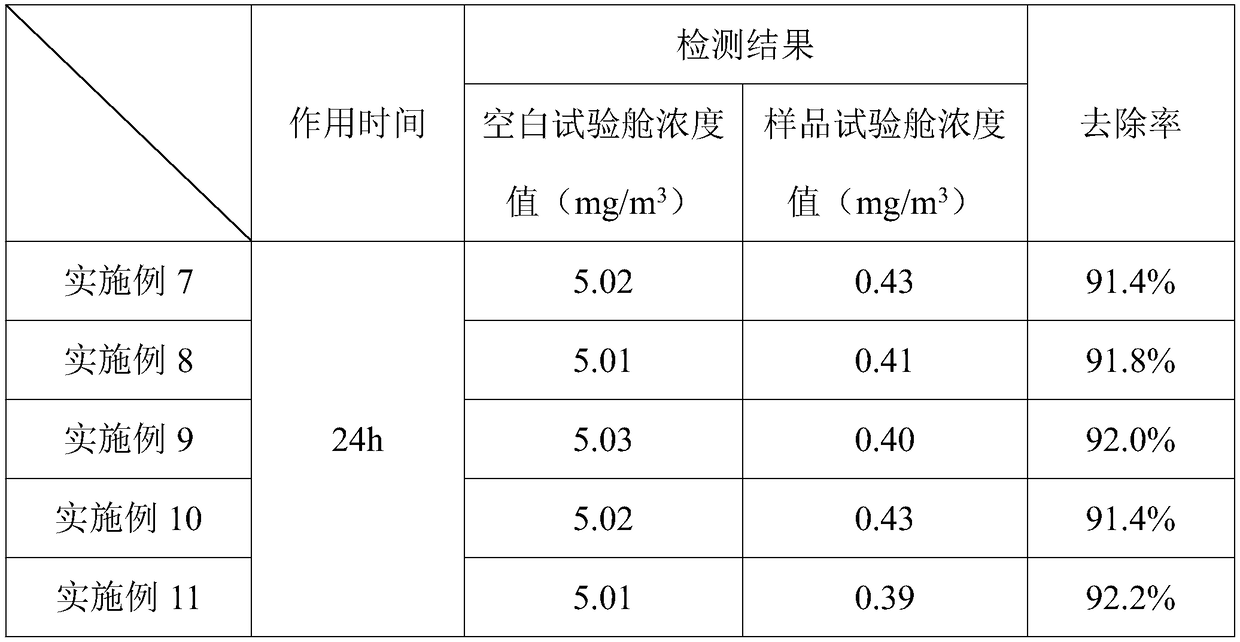Photocatalytic material and preparation method and fabric thereof
A technology of photocatalytic materials and fabrics, applied in chemical instruments and methods, separation methods, chemical/physical processes, etc., to achieve excellent electron transfer performance, uniform dispersion, and good stability
- Summary
- Abstract
- Description
- Claims
- Application Information
AI Technical Summary
Problems solved by technology
Method used
Image
Examples
preparation example Construction
[0028] The preparation method of photocatalytic material provided by the invention comprises the following steps:
[0029] S1, providing graphene oxide solution;
[0030] S2, performing thermal reduction treatment on the graphene oxide solution to obtain a graphene solution, the concentration of graphene in the graphene solution is 10mg / mL-20mg / mL, and the oxygen content of graphene is 5w%-10w %;
[0031] S3, adding hydrated titanium dioxide to the graphene solution, and performing homogeneous treatment to obtain a mixed solution;
[0032] S4, using a spray dryer to spray-dry the mixed solution to obtain a photocatalytic material, the photocatalytic material is composed of graphene and titanium dioxide nanoparticles, and there is a gap between the graphene and the titanium dioxide nanoparticles .
[0033] In step S1, the graphene oxide solution is prepared by the Hummers method. The preparation process of the Hummers method is relatively time-sensitive and relatively safe ...
Embodiment 1
[0057] The graphene oxide solution was prepared by the Hummers method, and then the graphene oxide solution was subjected to thermal reduction treatment at 300° C. to obtain the graphene solution. Wherein, the graphene concentration in the graphene solution is 10mg / mL, and the oxygen content of the graphene is 5w%.
[0058] The conditions for setting homogeneous treatment are: pressure 120MPa, flow rate 50mL / min. Add hydrated titanium dioxide to the graphene solution, the mass ratio of graphene and hydrated titanium dioxide is 1:3, and perform homogenization treatment to obtain a uniformly dispersed mixed solution.
[0059] Set the air inlet temperature of the spray dryer to 170°C, the air outlet temperature to 100°C, and the spray drying speed to 5mL / min. The mixed solution is spray-dried by a spray dryer to obtain a photocatalytic material. The obtained photocatalytic material is composited by graphene and titanium dioxide nanoparticles, gaps exist between the graphene and...
Embodiment 2
[0061] The graphene oxide solution was prepared by the Hummers method, and then the graphene oxide solution was subjected to thermal reduction treatment at 320° C. to obtain the graphene solution. Wherein, the graphene concentration in the graphene solution is 13mg / mL, and the oxygen content of the graphene is 7w%.
[0062] The conditions for setting homogeneous treatment are: pressure 130MPa, flow rate 65mL / min. Add hydrated titanium dioxide to the graphene solution, the mass ratio of graphene and hydrated titanium dioxide is 1:1, and perform homogenization treatment to obtain a uniformly dispersed mixed solution.
[0063] Set the air inlet temperature of the spray dryer to 175°C, the air outlet temperature to 100°C, and the spray drying speed to 6mL / min. The mixed solution is spray-dried by a spray dryer to obtain a photocatalytic material. The obtained photocatalytic material is composited by graphene and titanium dioxide nanoparticles, gaps exist between the graphene and...
PUM
 Login to View More
Login to View More Abstract
Description
Claims
Application Information
 Login to View More
Login to View More - R&D
- Intellectual Property
- Life Sciences
- Materials
- Tech Scout
- Unparalleled Data Quality
- Higher Quality Content
- 60% Fewer Hallucinations
Browse by: Latest US Patents, China's latest patents, Technical Efficacy Thesaurus, Application Domain, Technology Topic, Popular Technical Reports.
© 2025 PatSnap. All rights reserved.Legal|Privacy policy|Modern Slavery Act Transparency Statement|Sitemap|About US| Contact US: help@patsnap.com



